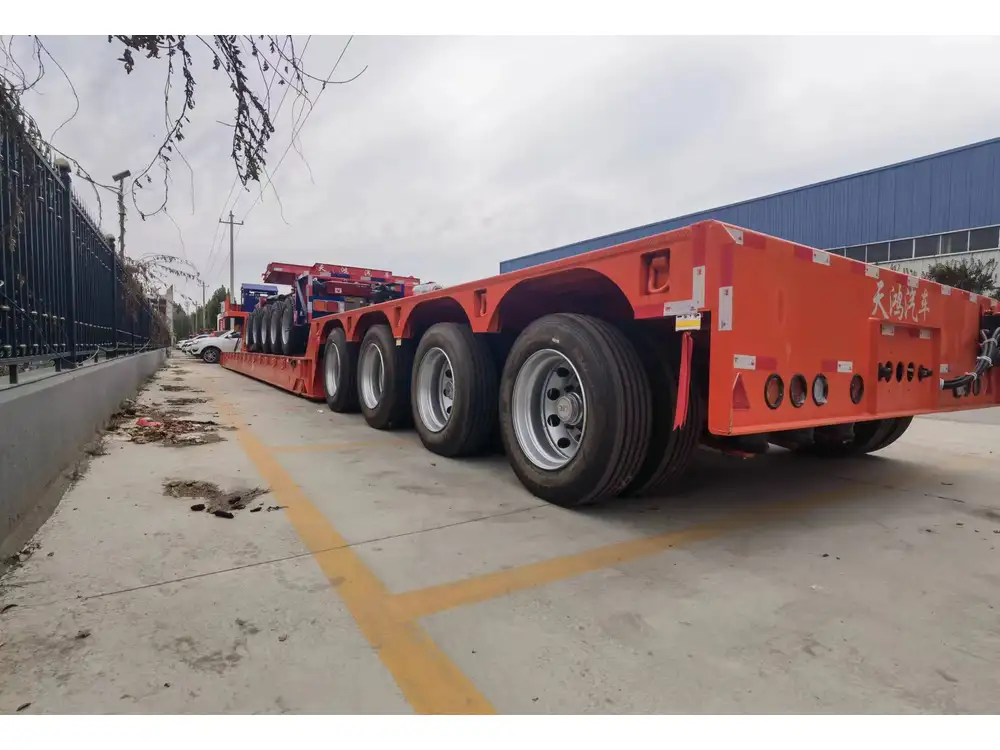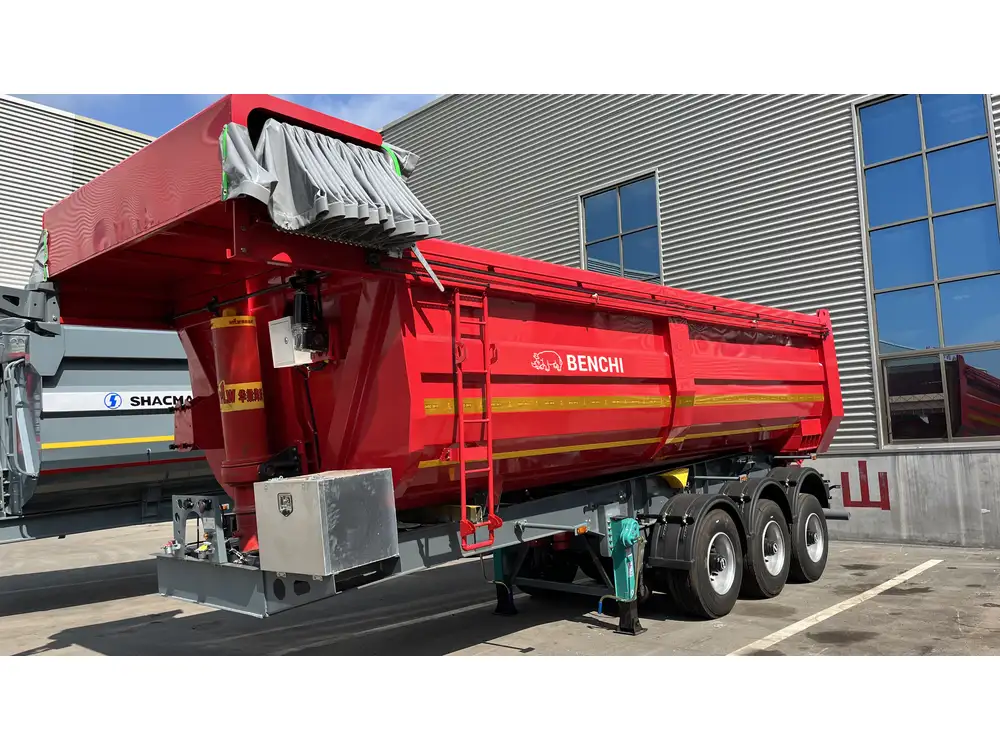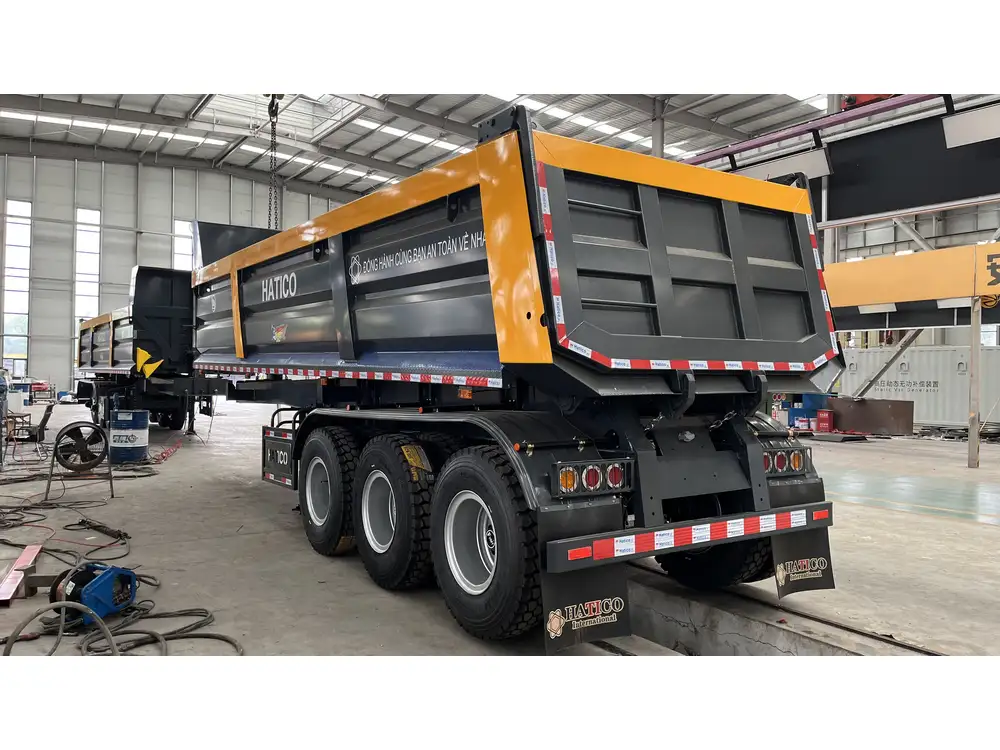Loading a motorcycle on a flatbed trailer requires precision, attention to detail, and a sound understanding of safety protocols. In this guide, we will walk you through each step of the process, ensuring that you have all the necessary information to load your motorcycle securely and efficiently. This guide is designed for motorcycle enthusiasts, dealers, and anyone looking to relocate their bike safely.
Understanding the Basics of Flatbed Trailers
Before diving into the loading process, let’s establish what a flatbed trailer is and its primary characteristics.
| Feature | Description |
|---|---|
| Structure | Flat platform without side walls or a roof |
| Accessibility | Easy loading from the rear, sides, or front |
| Versatility | Suitable for various vehicles including motorcycles |
| Capacity | Can accommodate multiple motorcycles or large bikes |
Flatbed trailers are the ideal choice for transporting motorcycles due to their wide and flat surface, which reduces the risk of tipping during loading.
Safety First: Pre-Loading Checklist
Before you attempt to load your motorcycle, ensure that you have the following items:
- Loading Ramp: Sturdy and wide enough to support your motorcycle’s weight.
- Straps: High-quality tie-down straps or soft loops specifically designed for motorcycles.
- Wheel Chock: To stabilize the bike and prevent it from rolling.
- Gloves: To maintain grip while handling the motorcycle and equipment.
- Safety Gear: Be sure to wear a helmet and protective clothing, especially if loading in a tight or precarious environment.

Step-by-Step Guide: How to Load a Motorcycle onto a Flatbed Trailer
Step 1: Prepare the Area
Clear the loading area of any obstacles, debris, or loose items that could hinder your loading process. Make sure the trailer is on stable ground to prevent rolling.
Step 2: Position the Trailer
Position your flatbed trailer on level ground. If it needs to be tilted using a ramp, ensure the slope is gentle enough for the motorcycle to ascend without risk.

Step 3: Inspect the Loading Ramp
Place the loading ramp against the trailer. It should be firmly secured and able to support the weight of your motorcycle. Use rubber grips at the contacts to provide additional traction.
Step 4: Start the Engine
It’s always a good idea to start the motorcycle before loading. This ensures that the bike is functioning properly and will clarify how agile it can be while being maneuvered onto the trailer.
Step 5: Secure the Motorcycle
Always ensure your motorcycle is in neutral gear before attempting to load it. This makes pushing or driving it onto the ramp smoother.

Consider the following two methods for loading:
Method A: Walking the Bike Up the Ramp
- Stand on the left side of the motorcycle, hold the handlebar tightly.
- Use your foot to push down on the lower part of the ramp, creating stability.
- Gradually walk the motorcycle to the trailer, applying gentle throttle if necessary.
- Keep your eyes on the loading ramp and your balance steady.
Method B: Riding Up the Ramp
- Stabilize yourself and the motorcycle by straddling the seat.
- Accelerate gently as you approach the ramp.
- Maintain a smooth trajectory up to the trailer.
- Use both the throttle and brakes effectively to control your ascent.
Step 6: Engage the Wheel Chock
Once the front wheel is on the trailer, maneuver the motorcycle into the wheel chock. This device holds the front wheel in place and prevents any unexpected movements during transit.
Step 7: Secure the Motorcycle
Using your tie-down straps, securely fasten your motorcycle to the trailer:
- Tie-Down Points: Identify the designated tie-down points on your motorcycle, typically near the handlebars and the rear.
- Attach Straps: Connect the straps to the frame and wheel chock, ensuring that they cross each other in a crisscross pattern to minimize movement.

Recommended Tie-Down Positioning
| Front | Back |
|---|---|
| On the handlebars | On the rear frame |
| Just above the fork tubes | On the subframe |
Step 8: Double-Check Everything
Before starting your journey, double-check all connections. The motorcycle should feel totally secure, with no wiggle or movement. Walk around the trailer and inspect the loading area to ensure all tools and loose equipment are accounted for.
Tips for Safe Transportation
- Regularly Inspect during Trips: If you’re driving long distances, take moments to stop and check the stability of the motorcycle. Ensure that the straps haven’t loosened.
- Drive Carefully: When transporting a motorcycle, avoid sudden acceleration, braking, and sharp turns. Gradual movements will help keep the bike steady.
- Monitor Weather Conditions: If you’re moving in adverse weather, ensure that both motorcycle and trailer are well-protected. Apply additional secured covers as necessary.

Common Mistakes to Avoid
Loading a motorcycle onto a flatbed trailer can seem straightforward, but there are common pitfalls. Here’s a few to watch out for:
- Insufficient Strap Tension: Failing to tighten your straps can cause the bike to shift during transport.
- Using an Unstable Ramp: An unsteady ramp increases the risk of accidents.
- Overloading: Respect the weight capacity of both the motorcycle and the flatbed. Overloading can lead to dangerous situations.
- Poor Positioning: Make sure the motorcycle is centered on the trailer to maintain balance while driving.
FAQs: Addressing Your Concerns
How do I know if my loading ramp is strong enough?
Ensure that your ramp has a weight rating that exceeds your motorcycle’s weight. Generally, ramps are rated to support 300 to 1,500 pounds.

Should I remove any accessories from my motorcycle before loading?
It is advisable to detach any loose or protruding accessories that can snag, obstruct, or increase the width of the motorcycle mercilessly.
What do I do if the ramp slips while loading?
If a ramp slips, immediately stop and control the motorcycle’s descent or prevent it from tipping over. Avoid sudden movements, and re-evaluate your ramp positioning.
Is it necessary to secure the rear of the motorcycle?
Securing the rear of the motorcycle is just as important as securing the front. It prevents any backward movement and preserves alignment with the trailer.

Final Thoughts: Mastering the Loading Process
Loading a motorcycle onto a flatbed trailer involves meticulous preparation, clear understanding of safety protocols, and careful execution. By following this comprehensive guide, you can ensure that your motorcycle is loaded efficiently and securely for transport. Each motorcycle, with its unique design and characteristics, may require slight adjustments to the loading technique, but the fundamental principles remain consistent.
Taking the time to invest in quality equipment and understanding the nuances of your motorcycle can significantly enhance your loading experience. Whether you’re a seasoned rider or a novice looking to relocate your bike, this guide serves as a resource to navigate the complexities of loading a motorcycle onto a flatbed trailer effectively. Remember, success is in the details that safeguard your prized possession during transit. Happy riding!



